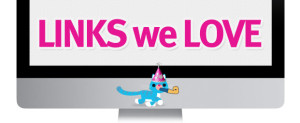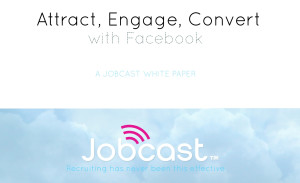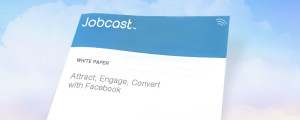We recently had a fantastic comment on our post about making Facebook work for small business.
In it, our reader asked just how targeted Facebook really is, whether Facebook recruiting is effective without an existing audience, and, in summary, whether or not Facebook recruiting is any different from placing an ad in a local newspaper. That last question is what really got my attention, and not in the way you might think. Using social media to recruit is different from using non-social media in very obvious ways. But, what I think we do not talk about enough, in the field of social recruiting, are the similarities between using networks like Facebook to promote job openings, and using the career section of your local paper. Facebook Recruiting is NOT magic. It is awesome, it is effective, it has high ROI... Facebook recruiting works, especially if you use a top notch recruiting app, just saying... But, no, sadly Facebook recruiting is not magical. Like placing an ad in your local paper, using a company career site, and recruiting with job boards, Facebook recruiting takes work, time, and a budget (albeit a relatively small one!)
Similarity Number One: Effort.
"The only place success comes before work is in the dictionary" - Inspirational poster on the internet
I wish that it was possible to simply share a job post and receive a flood of resumes. Actually, I don't because then I would be out of a job... But it would be very nice for all the employers and recruiters out there. Like with any other kind of recruiting campaign, social recruiting takes work. You will need to create content, build up an employer brand, and engage with Facebook users that you would like to see become part of your talent pool. Why Facebook is Better:
Unlike placing ads in the paper, and posting on job boards, when you use Facebook to recruit, all of the content you share, the work you put into your employer brand, and the effort you put into engaging with users, will also build your company brand as a whole. You get to combine recruiting with improving your overall social media presence, which is so important in today's heavily online driven markets. Similarity Number 2: Time.
Writing a quality job post takes time. Researching how you should promote those posts once written takes time. Building a trustworthy, recognizable employer brand takes time. You'll need to build a recruiting strategy, figure out how to write effective job posts, and promote your company culture no matter what medium you choose to employ. Why Facebook is Better:
Social sharing. Unlike print, job boards, or even LinkedIn, Facebook is a medium primarily built around interaction. The structure of the network its self encourages users to share, comment and Like your company's content, which means their connections are more likely to see your job posts. And, Metrics! Facebook Insights makes it pretty darn easy to figure out what works and what doesn't when it comes to your recruiting strategy. Using data to fine tune your recruiting campaigns is one of the best ways to cut down on the amount of time (and work) you have to spend on them in the future. You can also use a Facebook recruiting app like Jobcast to help you measure more recruitment specific data! Similarity Number 3: Budget.
The best things in recruiting are not free. Sure, there are some pretty great free options when it comes to Facebook recruiting, but if you want access to the most effective features the social network has to offer, you're going to have to invest a little capitol. Print ads cost money, quality job boards cost money, and hiring recruiters definitely costs money! Why Facebook Is Better:
It costs less. It's that simple. Ed Social Media explains how they were able to run a successful ad campaign for a mere $20 dollars. Running ads in print news papers often costs upwards of $500 (and that's for a small paper) which is much, much more expensive. Not only do Facebook Ads cost less, but they give you more. Facebook Ads allow you to target users based on their work history, skill set, and interests. Print journals may advertise circulation rates in the tens, even hundreds of thousands, that's a lot of potential viewers, but often those rates are exaggerated, the demographic is completely wrong for your jobs, and no one can tell you how many of those readers even flip to the wanted section of the paper! (Yet another great thing about Facebook Insights!) This incredibly comprehensive article by Jon Loomer will give you a better understanding of what Facebook Ads campaigns should cost. You can also check out our free white paper for a step by step guide to Facebook recruiting.
Read More








